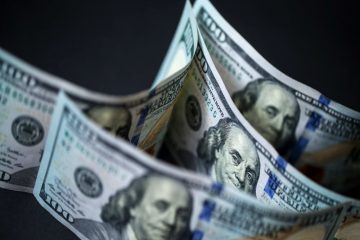Yuan Under Pressure as U.S., China Rates Set to Diverge Further

China’s central bank looks set to cut a benchmark interest rate this week, a move that will put more pressure on its currency as the U.S. Federal Reserve prepares to stand pat. The Chinese yuan has weakened against the U.S. dollar over the past three months, and went past 7.16 per dollar in mainland China’s tightly controlled currency market on Tuesday. In Hong Kong, the more freely tradable offshore yuan traded above 7.17 per dollar, near where it was in November 2022.
Two big factors influencing the performance of the yuan against the dollar are the difference in interest rates between China and the U.S., and the growth trajectory of the world’s second-largest economy. Neither looks favorable for the yuan, also known as the renminbi. “You have concerns about the pace of China’s economic recovery in the second quarter and you have some widening of the interest-rate differential with the U.S., so that will add more pressure on the renminbi,” said Carlos Casanova, senior Asia economist at Union Bancaire Privée.
The U.S. federal-funds rate is now at 5% to 5.25%, after an aggressive series of interest-rate increases since early last year. China doesn’t have an equivalent short-term lending rate, but has adopted an easing stance in contrast to the U.S. The Fed and the People’s Bank of China are both set to announce interest-rate decisions this week, on Wednesday and Thursday, respectively. The Fed is widely expected to hold rates steady before a potential rate increase in July. Most economists expect China’s central bank to cut its medium-term lending facility rate, a key benchmark, by around 0.10 percentage point on Thursday.
On Tuesday, the People’s Bank of China announced a similar cut to its seven-day reverse-repo rate, which it uses to provide funding to banks. That came as a surprise to some analysts. “Usually they cut the MLF and the interbank rates together,” said Ben Luk, a senior multiasset strategist at State Street Global Markets. “They are sending a signal that they will provide support regardless of what the Fed will do.”
Investors had widely expected a surge in economic activity after Beijing scrapped its strict zero-Covid policy at the end of last year, but recent data has disappointed, fueling wider questions about whether China can return to its days of heady growth. “China’s growth exceptionalism seems to have taken a bit of a knock,” said Aninda Mitra, BNY Mellon’s head of Asia macro and investment strategy.
Chinese exports fell 7.5% last month from a year before, compared to an 8.5% jump in April. That contributed to a slump in inflation. The weakening of the yuan could help China’s economy, by making goods produced in the country cheaper for foreign buyers. “I think a weaker currency here, at least from a tactical standpoint, is going to be quite crucial for bringing about more inflation in the economy,” said Mitra.
China’s central bank no longer has the same concerns about dollar strength that it had last year, said Ju Wang, head of Greater China FX and rates strategy at BNP Paribas. The rapid rise in the dollar last year led to a scramble among emerging-market central banks to protect their currencies, and attempts by the PBOC to influence the currency by its daily fixing, which sets the middle of the permitted trading range for the onshore yuan. But the daily fixings this year have been largely in line with the market, said Wang. The yuan tumbled against the dollar last year, breaking 7.30 for the first time since 2007 in the onshore market and going past 7.34 per dollar offshore. Several analysts said they expect the yuan to hit the same level this year, but few expect it to get much weaker than that.
Others are more optimistic about the direction of the yuan, predicting that it will recover to around 6.7 per dollar. That is where the currency was trading in January, as traders bet on an economic rebound following the end of China’s zero-Covid policy.“Sentiment is very bad in China now, but we do hold a view that its economy will be better in the second half of the year, better than the U.S. which may enter into a mild recession,” said Lin Li, MUFG’s head of global markets research in Asia.









